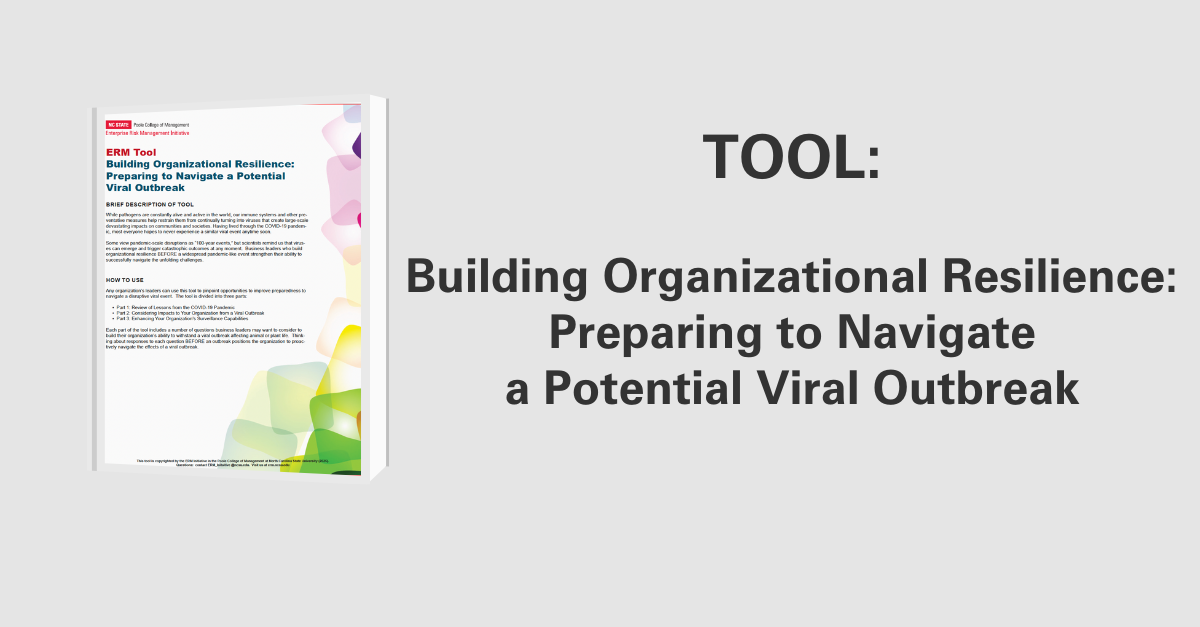Making the Connection Between Strategy-setting and Risk
Unfortunately, companies commonly forgo the step of analyzing their strategic risks, often with severe consequences. The thought paper, “Performance/Risk Integration Management Model – PRIM2 Early Mover Series: Analyzing Strategic Risk” from Protiviti Inc. explains what strategic risks are and illustrates why the discussion of risk should be inseparable from an organization’s discussion of strategy. To combat this, the paper provides an approach for integrating risk assessment into the strategy-setting process. This approach pushes decision-makers to think critically about their proposed strategies and about the uncertainties of the future. Ultimately, managers who consider risk in selecting strategies will be better-equipped to guide their organizations to success.
What are Strategic Risks?
Strategic risks are those risks that can undermine an organization’s business model and competitive advantage. These risks can arise from within an organization, and they can also develop externally in the business environment. Strategic risks can show up in many forms, including economic events (like the recent financial crisis) or shifts in consumer preferences (for example, from desktop computers to mobile devices like tablets and smartphones). Regardless of their form, strategic risks are difficult to spot and can even be difficult to imagine.
Connecting Risk Assessment and Strategy-setting
The Trouble with Strategic Risks
Whether they know it or not, organizations encounter strategic risks each and every time a new strategy is selected. If strategic risks are effectively analyzed, companies can preserve value and can also have the flexibility to seize opportunities as they arise. However, strategic risks are inherently difficult to handle. Protiviti identifies four reasons for this:
- Strategic risks are difficult to quantify and measure.
- Strategic risks often manifest themselves over a longer period of time than managers are accustomed to evaluating.
- Assessing strategic risks requires managers to think about the downside of the business strategies that they are naturally optimistic about.
- Strategic risks often arise out of significant uncertainty and can be unprecedented. Leaders must expend additional effort in order to identify and monitor potential strategic risks.
This white paper offers a methodology for analyzing strategic risks that pushes past the difficulties mentioned above.
Approach to Risk Assessment
Protiviti calls their method a “contrarian approach” to risk assessment. The underlying premise of the approach is this: The success of every business strategy hinges on a set of assumptions about factors like the state of the business environment, competition, and/or the operational capability of the organization to execute the strategy. The contrarian approach connects strategy-setting and risk assessment by identifying the assumptions underlying each business strategy and then asking, “What if these assumptions turn out to be wrong?” The steps to Protiviti’s approach include the following:
- Identify the most important assumptions underlying a particular strategy.
- Next, articulate statements that contradict these assumptions. Since an assumption represents a positive condition necessary to the success of a strategy, the contradiction should be the exact opposite—a condition that would negatively impact a strategy.
- Brainstorm various scenarios that could create the negative conditions captured in the contrarian statements. The key in this step is to think creatively about possible scenarios.
- Rate the risk scenarios based on criteria such as the impact of the scenario on the organization.
- Develop a response to the identified strategic risk scenarios, and also develop methods for monitoring risks as they develop. Monitoring risks can be aided by tools like key risk indicators (KRIs). For more on key risk indicators, see http://www.poole.ncsu.edu/erm/index.php/articles/entry/developing-kri-coso/
This white paper provides several examples of how the contrarian approach might work in practice. Protiviti also provides additional comments about scenario planning and about evaluating scenarios as part of the risk assessment and strategy-setting process.
Original Article Source: “Performance/Risk Integration Management Model – PRIM2 Early Mover Series: Analyzing Strategic Risk”, Protiviti Inc., August 01, 2011
- Categories:
- Types:


